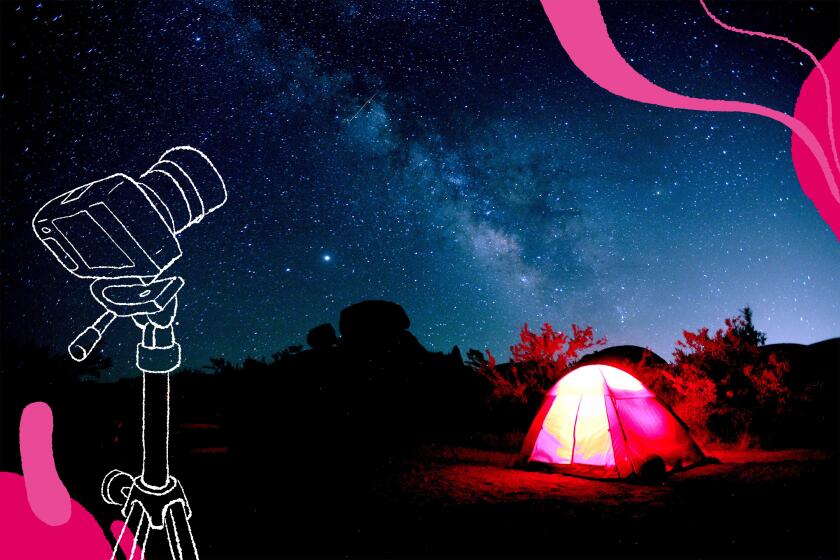Photos by Jon Norris
- Share via
We plodded through an obsidian darkness, one deliberate step at a time, our headlamp beams illuminating the way. The steep trail seemed to stretch into eternity. My 8-year-old griped, “We’ve been hiking for years,” and I wondered why I’d ever concocted this ridiculous quest.
It all started in June 2023. My kid was out of school and so was my husband, a teacher. Long, lazy days of summer stretched ahead. With no travel plans on the horizon, I still longed to infuse our time with adventure and a sense of wonder.
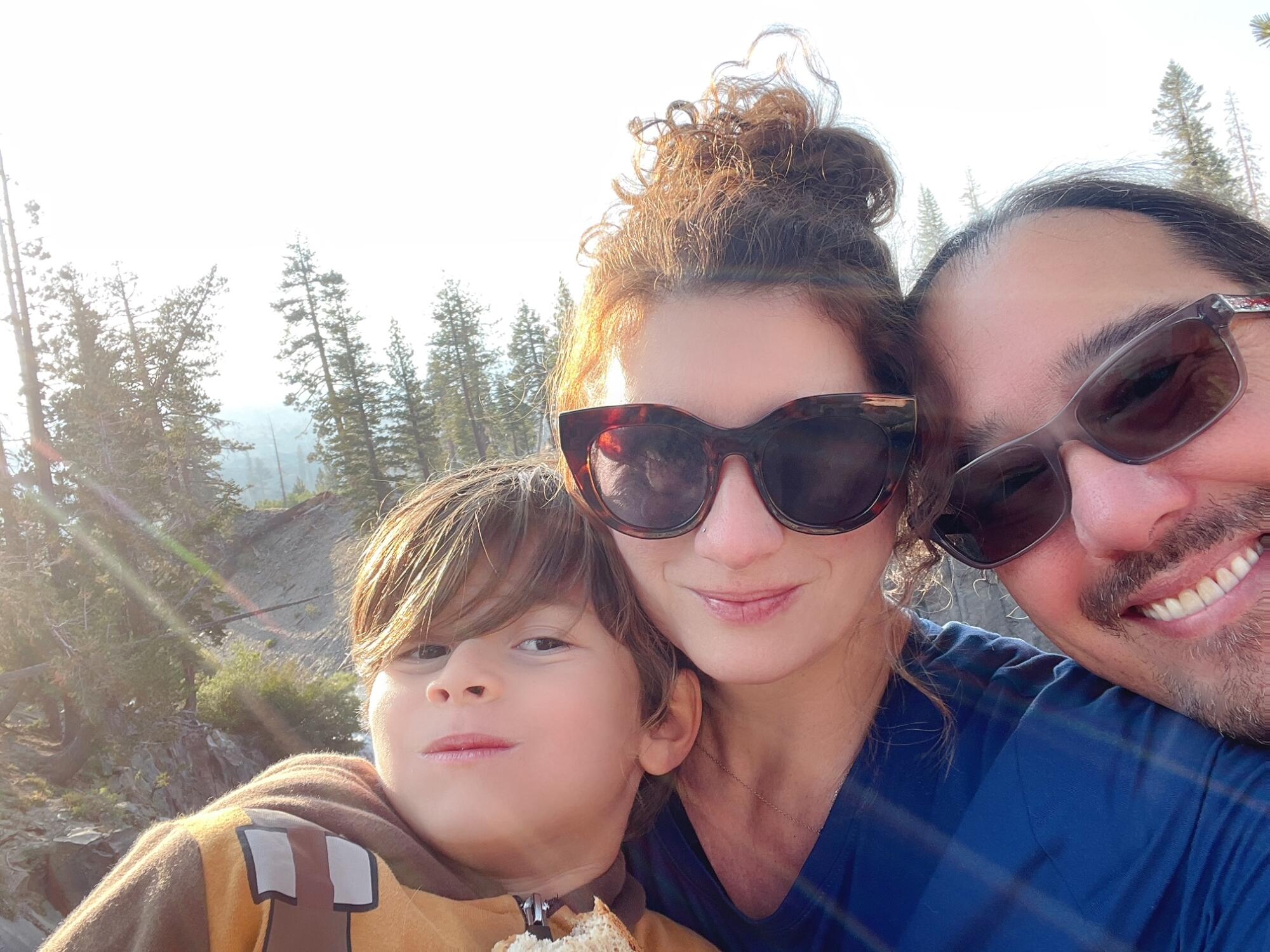
Exploring our own backyard seemed like the obvious answer. But we live just outside Joshua Tree National Park, where summer days are scorching. Even modest outdoor activity can be dangerous.
A travel writer I admire once said that the most meaningful travel stories are built upon quests, no matter if that’s summiting a mountain or finding the perfect Hello Kitty backpack at a night market stall. The pursuit of a goal is what makes for memorable moments. And that sounded exactly like what my family needed. I simply needed to work within our constraints.
So I came up with a quest that sounded simple enough: Find the very best sunrise spot in Joshua Tree.
Before we started chasing sunrises, I made a list of potential sites, then mapped out their locations and the amount of time it would take to reach each one. At 1,242.4 square miles, the park is slightly larger than Rhode Island. Some of the locations were fairly close to our home while others were more than an hour’s drive away. A handful of spots were accessible only by trekking, which also had to be factored into our wake-up time.
The high desert may have gone upscale, but don’t worry — it’s still funky.
We kicked things off with one of the best-known vistas in the park: Keys View (33° 55’ 35.20” N, 116° 11’ 14.78” W), a drive-up overlook with a paved, wheelchair-accessible trail.
We arrived by 5 a.m., and I was surprised to see other families already there with folding chairs and Thermoses, as if waiting for a parade to begin. A few looked like rock formations themselves, hunkered under blankets in the cool early-morning air. Over time, the sky warmed with color, painting hills in the distance. A nearby group of 20-somethings fervently applauded the sun, as if Taylor Swift had just taken the stage.
When I hatched this plan, I assumed we’d experience each location in solitude, because I didn’t know anyone else who willingly woke up that early. (When I told a friend I’d be chasing sunrises, she said, “Love that for you, but I’m never coming along.”) So sharing this with strangers was a pleasant surprise. I like the moments when people collectively pause to appreciate nature.
For the next couple of months, my family fell into a routine of 3:30 a.m. alarms, pots of coffee and backpacks stuffed full of water and snacks. My husband drove, I navigated and our son snored in the backseat. Each day we set out with hope, unsure of what the sky would bring.
Beyond Keys View, we rarely crossed paths with others. The wee morning hours were blissfully tranquil, even though Joshua Tree saw a record-breaking number of visitors in 2023, with more than 3.2 million people passing through its gates. Our schedule meant we could engage with popular sights before the crowds descended.
This was especially noticeable at Hidden Valley (34° 00′ 59.14″ N, 116° 09′ 41.17″ W), a scenic, 1-mile loop that showcases the park’s beauty, from dramatic Joshua trees to massive boulders that blush scarlet at first light. As sunrise chasers, we were already leaving as a line of cars vied for spots in the parking lot.
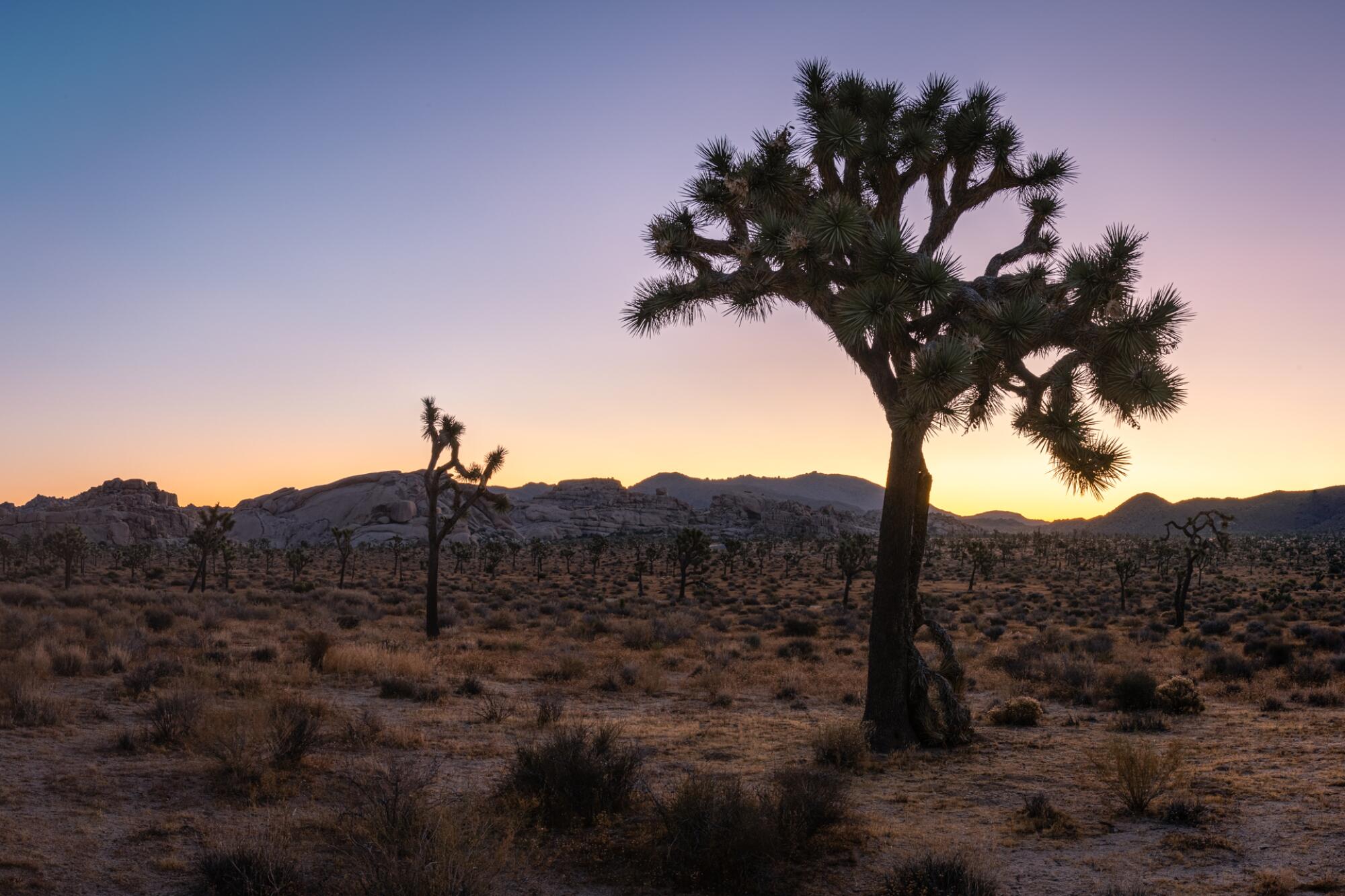
Over time, as my eyes calibrated to the darkness, I began to recognize rock formations by how they blacked out the constellations. It was another unexpected bonus of this quest: the rarity of witnessing truly dark skies. According to light pollution researchers, a natural dark night sky is inaccessible to 99% of people in the United States. The good news is that Joshua Tree is a designated Dark Sky Park, and for those living in the Greater Los Angeles area, it’s the most convenient place to experience a dark sky.
Against the star-studded quilt of night, we set off for Arch Rock (33° 59’ 24.6″ N 116° 01’ 20.9″ W), a mostly flat out-and-back trail. Shortly before sunrise, the conditions were just right to display the Belt of Venus, a phenomenon in which a swath of pastel pink runs along the opposite horizon from the sun. My family was playing an epic game of “the floor is lava,” hopping from boulder to boulder, when the sun burst through the 30-foot natural granite arch. We stopped and watched, wonderstruck.
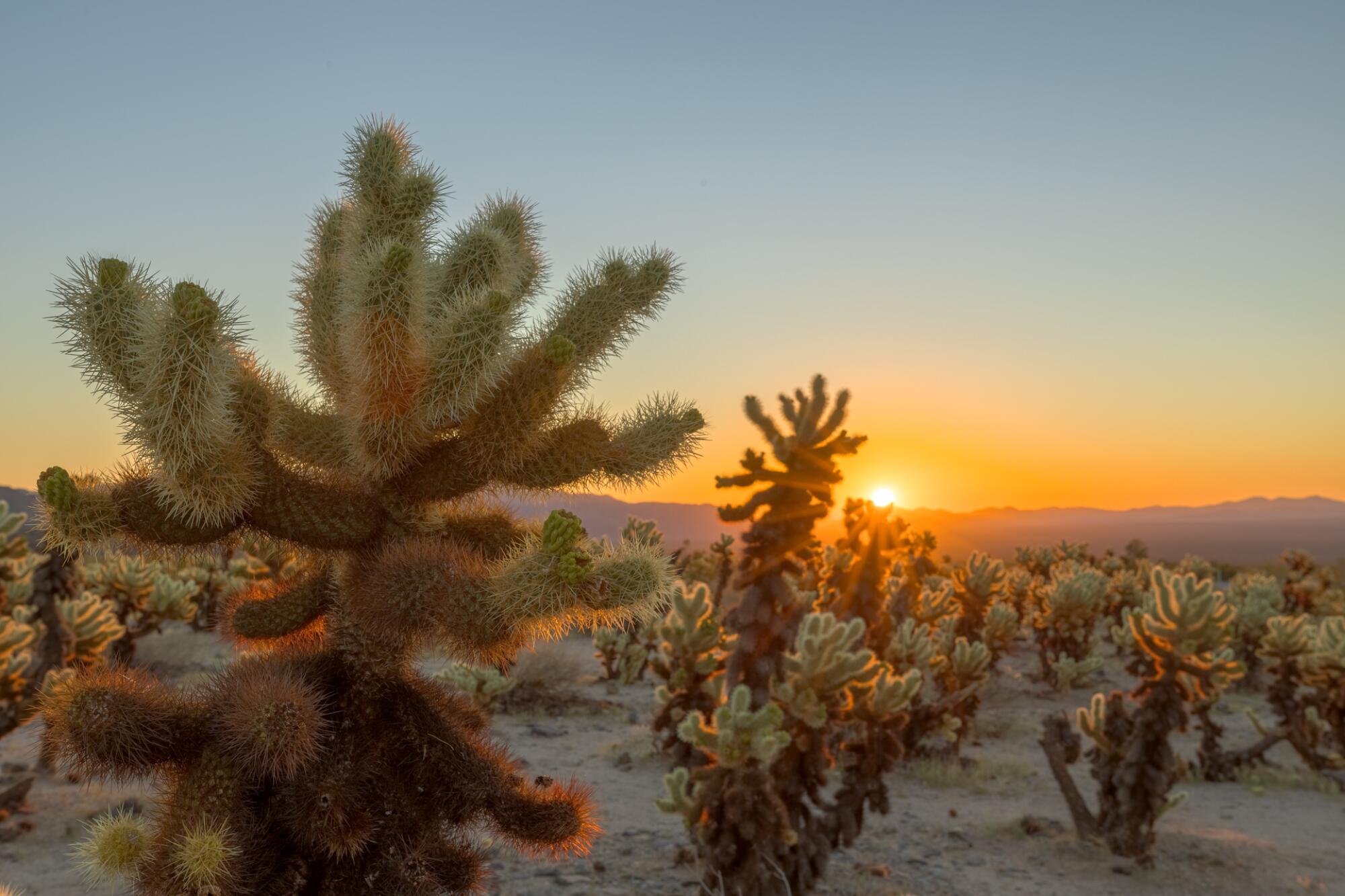
Another location that knocked us out was Cholla Cactus Garden (33° 55’ 30.86″ N 115° 55’ 43.50″ W), my pick for Joshua Tree first-timers. It’s accessible, with jaw-dropping views mere steps from the parking lot, and sunrise propels this iconic scene to another level. As the light catches the cholla needles, the cactus glows like a neon sign in Vegas.
Through these excursions, we came to know the park and its inhabitants in an intimate way. Each morning, I knew when to scan the trails for cottontails just starting their day. A few times we came across a three-legged coyote, affectionately known by locals as Tripod, loping along the empty road. My son spotted pockets of wildflowers that thrived despite the heat. Some ravens began to look familiar.
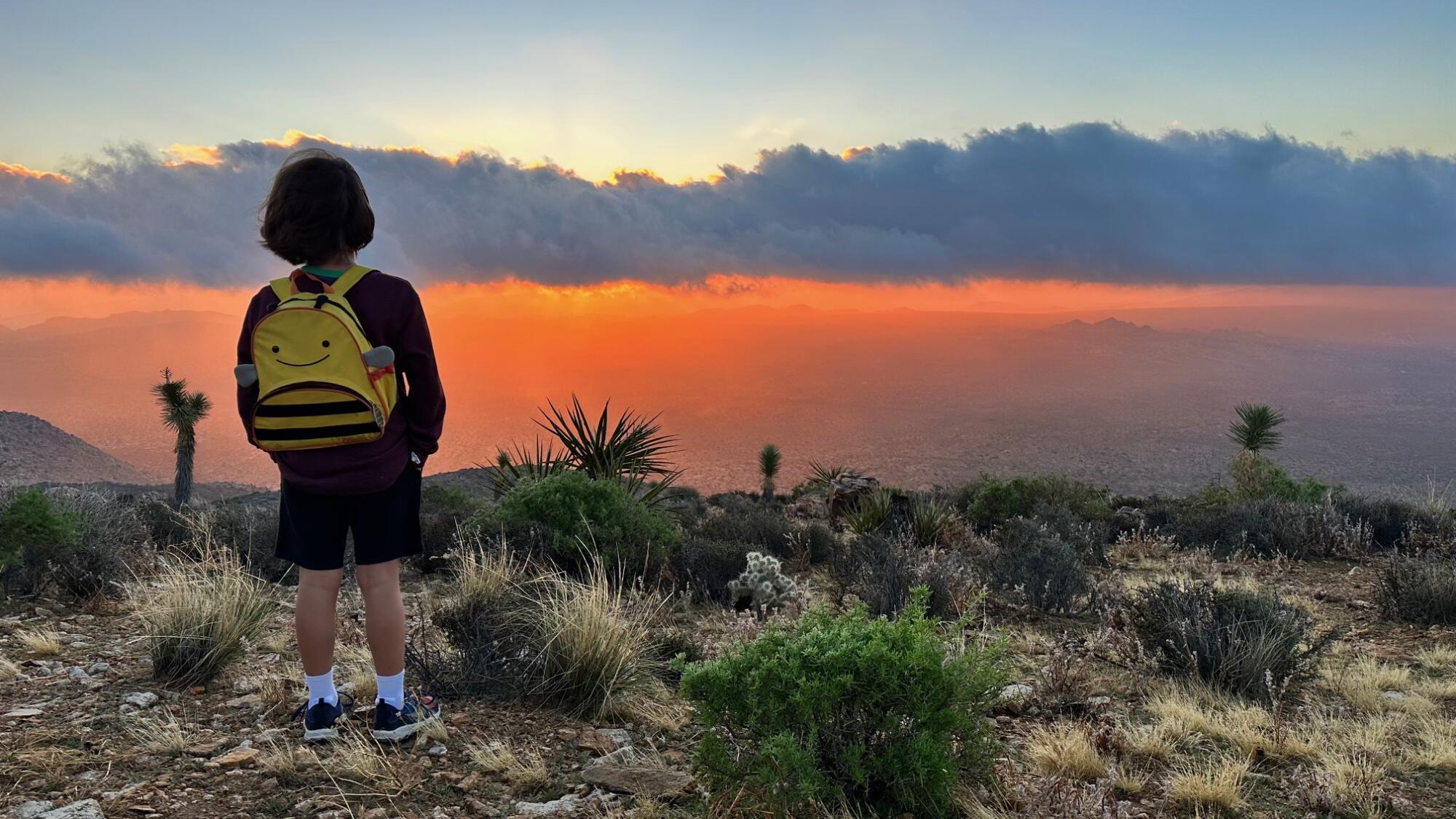

Early morning adventures. (Maggie Downs)

Somehow our quest to find the ultimate spot became more expansive, unspooling into awe for this place in its entirety. And we weren’t alone in that feeling. When I reached out to a former Joshua Tree park ranger about the best sunrise location, the response was … well, everything.
“I asked some rangers what their thoughts were and the answers all boiled down to essentially, it’s all amazing,” said Perrin Pring.
There’s no one perfect sunrise spot, she said. It’s more personal than that.
You’ll find desert delights when you veer off the beaten path.
“Having been in national parks for as long as I have, I find people having the most meaningful experiences when they are somewhere that resonates with them,” Pring said. “Truly, the beauty of the parks is when people discover something new to them and revel in it. And for them, the sunset or sunrise they watch from a place I don’t even stop at becomes a lifelong memory.”
For me, that moment came after trudging up Ryan Mountain (34° 00′ 09.25″ N, 116° 08′ 09.38″ W), a 2.9-mile trail with an elevation gain of 1,069 feet.
The trek was challenging to navigate in the predawn hours, but once we reached the top, the 360-degree view felt earned. To the west, the clouds unfurled like strawberry-pink candy floss. To the east, bold streaks of orange and red.
My family embarked upon this quest in an effort to have a little fun during a quiet summer. We ended up sharing the most colorful season of our lives together. Our sunrise-chasing fostered a deeper connection with nature, but perhaps more important, it taught us to be comfortable within the darkness and turned our faces skyward with anticipation.
At the top of Ryan Mountain, my son spun in joyful circles, arms extended, delighted by the vibrant show happening above. Right there I had my answer. That was exactly why we did this.
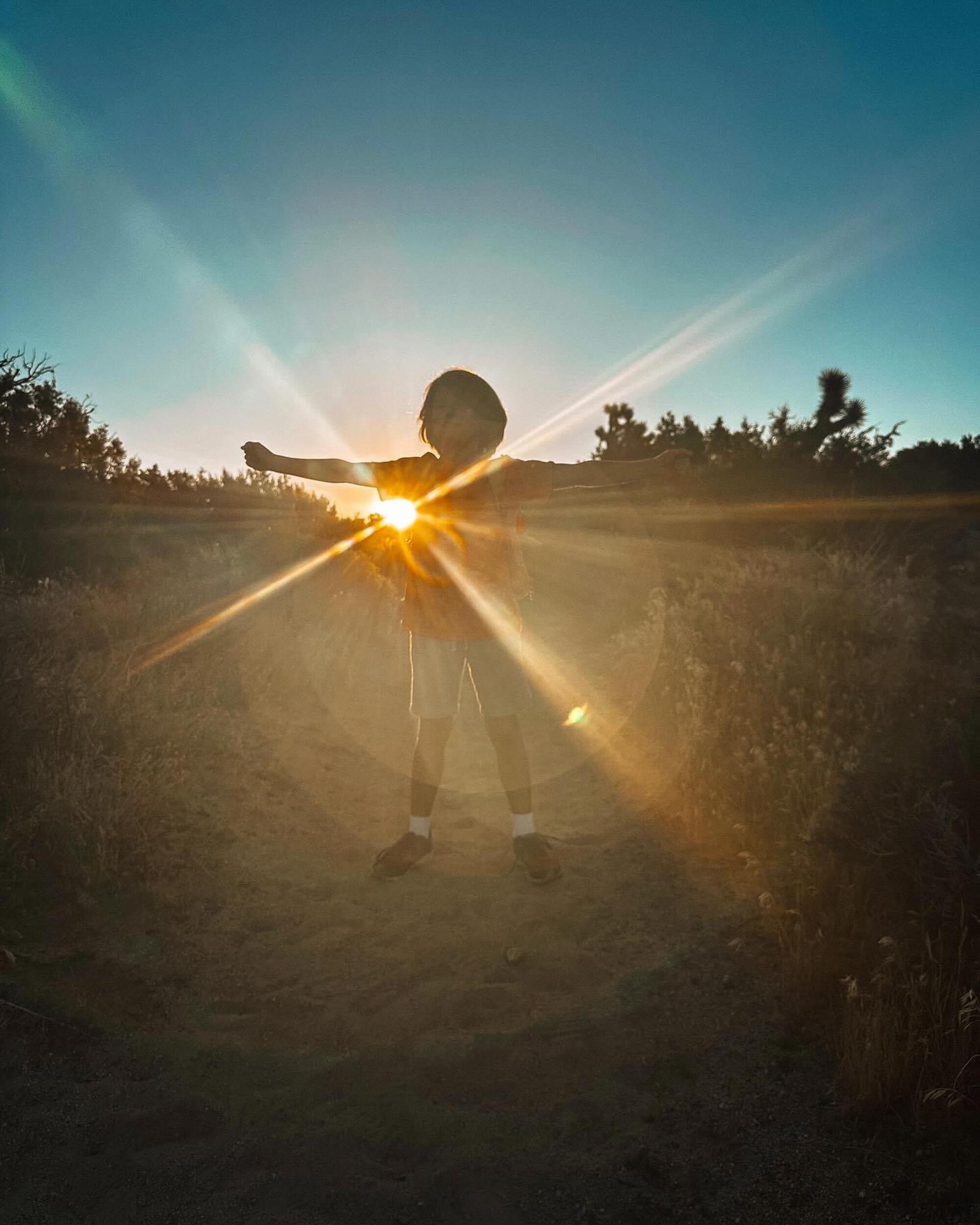
Catching a Joshua Tree sunrise? Here’s how to photograph it
Landscape photographer Jon Norris of Lake Forest fell in love with Joshua Tree a decade ago. He leads frequent landscape photography workshops there on a private basis and through Desert Institute, the educational branch of the Joshua Tree National Park Assn.
Here are his tips for catching a sunrise on camera.
Scout your location in advance. “When you go out for sunrise, you’re going to be setting up in the dark. If you don’t know where you want to set up your tripod, where you want to point the camera, it’s difficult to get a satisfying image, because you’ll be like a headless chicken running around. If you’re not careful, you’ll miss it.”
Get there early. “Make the most of the light. Very often, the best light actually happens before sunrise, when the sun is still below the horizon.”
Don’t always shoot into the sun. “A lot of people don’t realize that at sunrise, often the best light is not toward the sun. If the atmospheric conditions are right, you can have the most amazing colors in the opposite direction of the sun.”
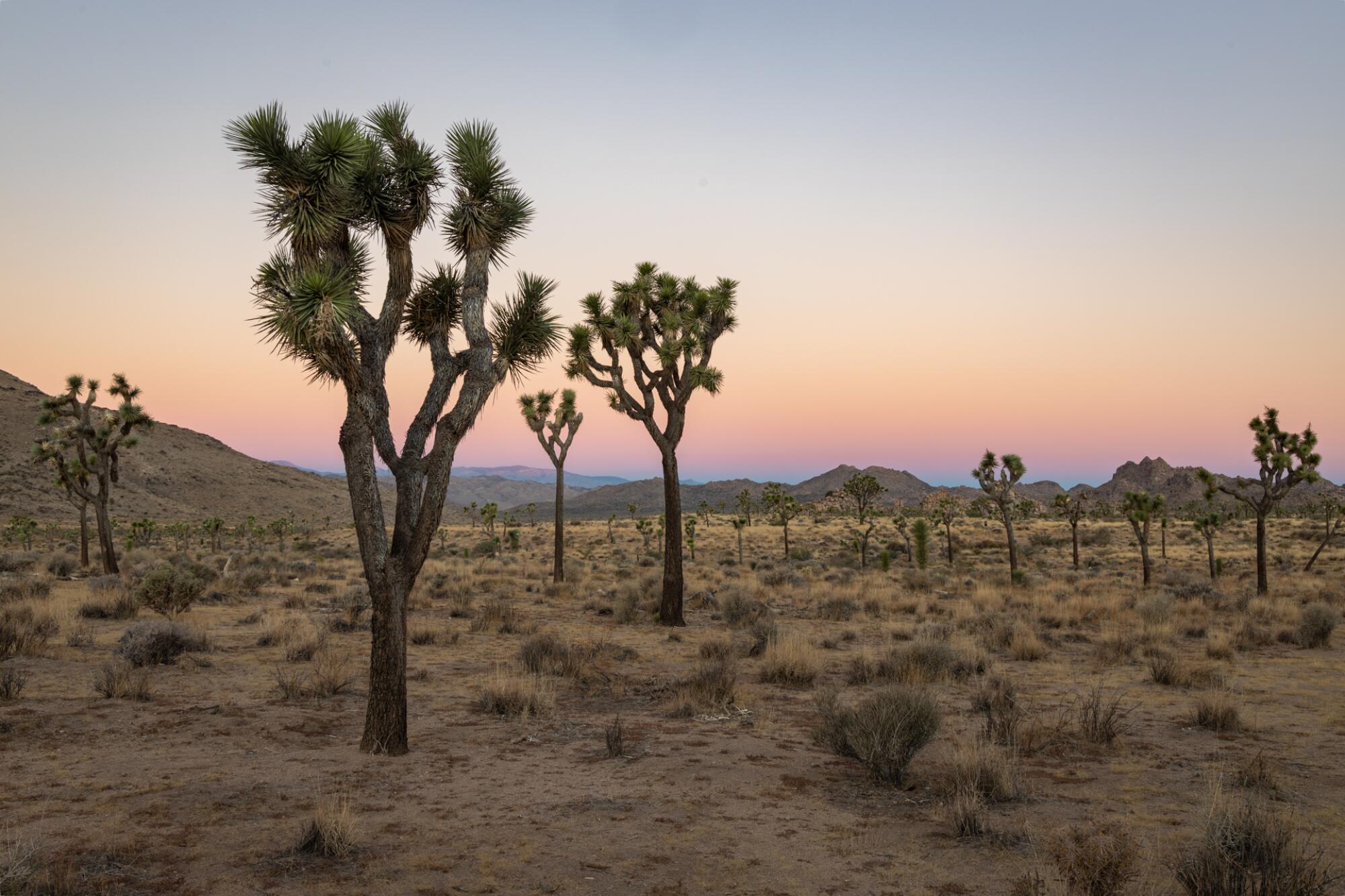
Check out Norris’ favorite spot, Quail Springs (about 8 miles inside the western entrance). “It’s an open plain with quite a few Joshua trees. But unlike a lot of areas in the park, they’re quite spread out and well spaced. So you can isolate one, two or three trees and take a portrait of them with the sunrise in the background, rather than this huge mass of trees where you don’t have a fixed subject.”
Work with what you have. “Regardless of what kind of equipment you’re using, no camera can replace taking a picture in really good light and composing a strong image. It doesn’t matter if you’ve got an iPhone or the most expensive new camera, none of them will replace those two important skills.”
More to Read
Sign up for The Wild
We’ll help you find the best places to hike, bike and run, as well as the perfect silent spots for meditation and yoga.
You may occasionally receive promotional content from the Los Angeles Times.

